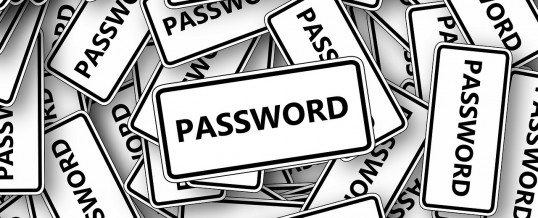
Think creating strong passwords is a pain? It’s really not. And getting hacked is far more painful.
The call to create tough-to-crack passwords gets louder every year. And still, scores of people ignore it.
Case in point: Computerworld’s list of the worst, most common passwords for the last five years. Topping the chart in 2015 were:
- 123456
- password
- 12345678
- qwerty
- 12345
- 123456789
- football
- 1234
- 1234567
- baseball
Not terribly creative—and worse—easily hackable.
Weak passwords pose a huge security risk, enabling crooks to break into private accounts.
Things get worse when people use one password across the board. Now their bank account, credit-card account, PayPal account, social-media accounts, and so forth are exposed. No firewall will save them.
Hackers are clever, resourceful, and getting more aggressive. Sophisticated password-cracking tools make their jobs simpler.
So there’s no better time than now to beef up your password.
Tips for Creating Strong Passwords
- Go long. Passwords of 12 to 15 characters are ideal. The longer the password, the tougher it is for automated tools to figure out.
- Mix it up. Incorporate upper and lower case letters, throw in at least two numbers, and add a couple special characters.
- Avoid whole words. Variations of a word like “football” are easy for tools to crack. For example, they’ll go through “football1,” “football2,” Football1,” “FOOTBALL2” and all other possibilities quickly, eventually landing on the correct version. Any word or combination of words makes for a terrible password.
- Don’t go personal. Thanks to social media, many of our “private” details—kids’ names, pets’ names, birthdates, etc.—are out there for the world to see. Hackers glean this info from our profiles and elsewhere, enabling them to make educated password guesses. Keep “Fluffy,” “December6,” and “EmmaHenry” out of your password.
- Stay away from keyboard patterns. Note that “qwerty” is #4 on the list above. Password-cracking tools are hip to combinations like this, so avoid obvious patterns of any kind.
Easy Trick for Creating Memorable Passwords
Come up with a sentence you can remember:
The first concert I ever went to was Taylor Swift and tickets were $45.
Now take the first letter of each word and create your password:
T1stcIew2wTS&tw$45
That’s 18 characters and contains your mix of upper and lower case, numbers, and symbols.
Of course, you shouldn’t have the same password for every site. So you can differentiate it for every login by adding more letters at the beginning or end.
For example
- For your Gmail account, add GM at the end: T1stcIew2wTS&tw$45GM
- Facebook would be FBT1stcIew2wTS&tw$45
- Chase Bank: T1stcIew2wTS&tw$45CB
You get the picture.
If all this feels like too much work, opt for a password-management tool, such as:
What are your tips and tricks for managing passwords? Let us know in the comments section below.


NOV
2016

About the Author:
Lisa McComsey is a freelance writer, marketing consultant, and contributor to K12USA’s website and blog. In addition to her passion for technology, Lisa is a running and bicycling enthusiast, author of two books ("The Vegan Cheat Sheet" and "Seagan Eating"), and a hopeless chocolate addict.